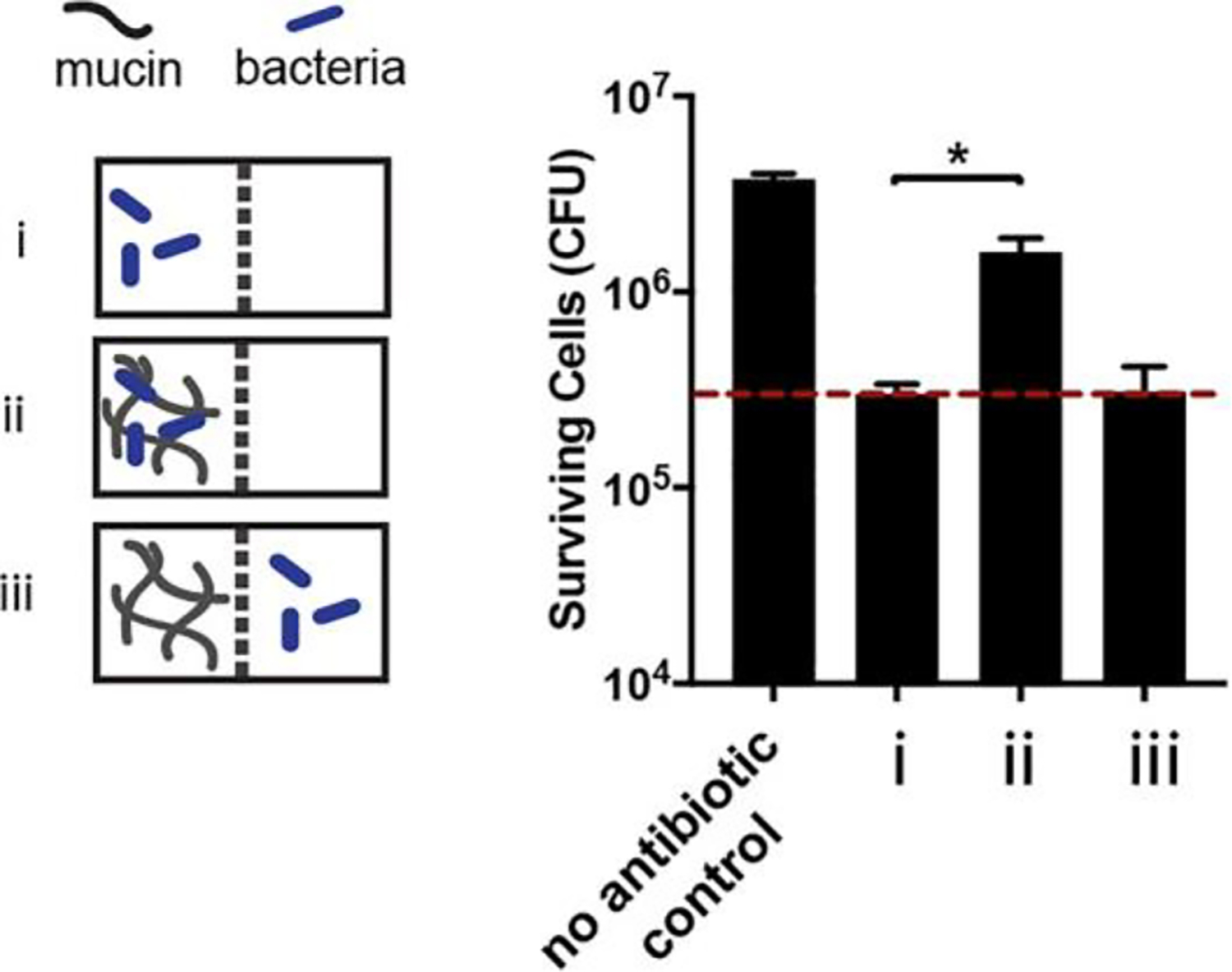Figure 4.

Two chambers were separated by a 12 kDa MWCO membrane that allowed for the free diffusion of antibiotics, but not mucin or cells, between the chambers. As in the equilibrium dialysis experiments, mucin, buffer, and antibiotic were added to the chambers (Figure S1) and the system was left to equilibrate for 4 h before adding P. aeruginosa cells. Bacteria were exposed to ciprofloxacin for 2 h in three different conditions: (i) buffer with no mucin, (ii) mucin, and (iii) buffer with mucin in the connected chamber, separated from the cells by the membrane. In condition iii, mucin was not in direct contact with the bacteria, but could still interact with the antibiotic. Ciprofloxacin efficacy was reduced relative to the mucin-free control in condition ii, recapitulating the result from Figure 2 in this modified system. However, in condition iii (bacteria were separated from mucin by a membrane and exposed to ciprofloxacin in buffer), no increase in surviving cells was observed. This suggests that mucin is not able to bind and reduce the antibiotic concentration of ciprofloxacin and that a mechanism other than mucin-antibiotic binding accounts for the observed reduction in ciprofloxacin efficacy. Dotted red line marks the number of surviving cells in the mucin free control (i). All error bars represent standard deviation of biological replicates (n ≥ 3). (*) indicates a significant increase in the number of surviving cells after antibiotic exposure compared to that in mucin-free buffer, as determined by the t test (P < 0.0001).
